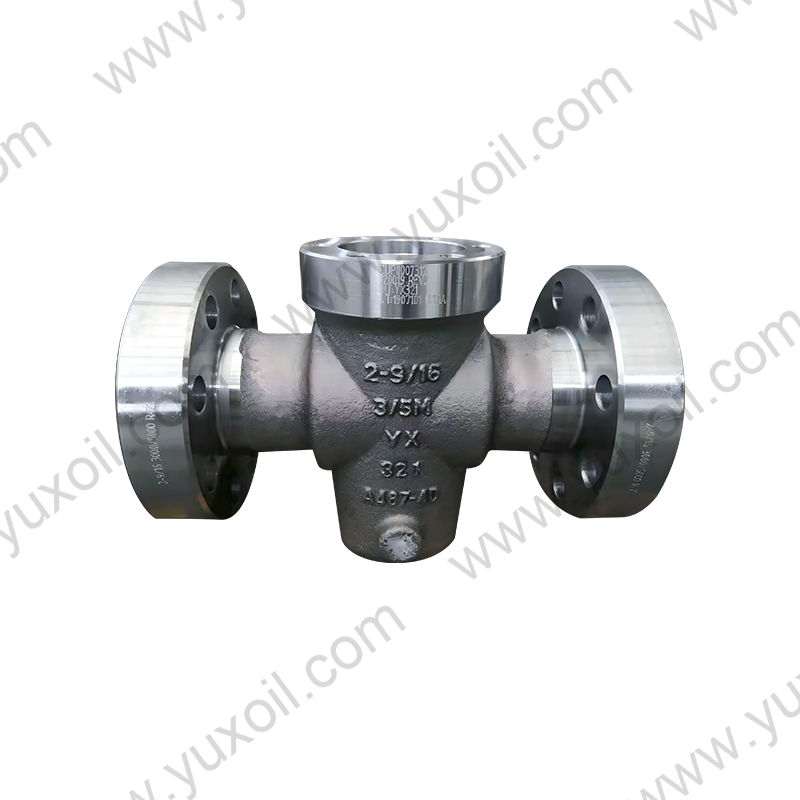-

+86-13961903990
 2025.07.07
2025.07.07
 Industry News
Industry News
In the field of high-pressure oil and gas development, valves, as key equipment for controlling fluid delivery and ensuring system safety, must have extremely high reliability and adaptability. Due to the harsh conditions of high pressure, high temperature, and highly corrosive gases (such as CO₂, H₂S) commonly found in oilfield working conditions, extremely high standards are set for valve design and performance.
The API 6A standard formulated by the American Petroleum Institute (API) is the wellhead equipment specification widely followed in the oil and gas industry, providing a basic basis for the selection and design of valves.

1. What is API 6A?
API 6A is the abbreviation of "Specification for Wellhead and Christmas Tree Equipment". It is one of the technical standards formulated by API (American Petroleum Institute). It is specifically for oil and gas wellhead equipment, including the design, manufacture, testing and material requirements of various High Pressure Oilfield Valve (such as gate valves, check valves, throttle valves, etc.).
The purpose of this standard is to ensure the reliability, safety and interchangeability of equipment in high-pressure and high-risk environments. It covers a variety of working conditions from conventional land wells to ultra-high-pressure deepwater wells, and provides a unified technical standard for oilfield equipment, so that manufacturers and users have a common quality and performance baseline.
2. Detailed explanation of API 6A key parameters
PSL (Product Specification Level) Product Specification Level
PSL 1: Minimum requirements, suitable for low-risk environments.
PSL 2–4: Material inspection, non-destructive testing (NDE), welding requirements and record traceability are gradually added. PSL 4 is the highest level and is often used in extreme environments (such as deep sea and sulfur-containing areas).
Material Class
Indicates what kind of corrosive media the material used in the equipment is suitable for, for example:
AA/N: non-corrosive environment
BB/CC: suitable for moderately corrosive environment
HH: suitable for highly corrosive environment containing H₂S (must meet NACE MR0175)
Temperature Rating
Common temperature ratings include:
L (-46°C ~ +121°C)
U (-18°C ~ +121°C)
X (-46°C ~ +250°C)
Special ratings can also adapt to -75°C or up to +350°C environments
Rated working pressure and size
API 6A defines pressure levels: 2,000 psi, 3,000 psi, 5,000 psi, 10,000 psi, 15,000 psi and even 20,000 psi
Valve size and flange connection structure under each pressure level are strictly regulated to ensure system compatibility
3. Why is API 6A not enough? —What does “Beyond” mean?
Although API 6A is the basic industry standard, in actual oilfield applications, many scenarios put forward higher requirements for valves:
Enhanced performance under complex working conditions
Deep sea, shale gas, acid gas wells and other occasions have higher requirements for valve pressure resistance, sealing and corrosion resistance
API 6A does not cover all extreme cases, such as the sealing performance test method under HPHT (high pressure and high temperature) conditions
Customized design
Customers may require:
Quick opening and closing function (such as hydraulic/pneumatic actuator integration)
Redundant sealing system
Embedded sensor for online monitoring
Application of new materials
For example:
Corrosion-resistant alloys such as Inconel 625, Monel, Super Duplex
Ceramic lining and tungsten carbide coating improve wear resistance
These advanced materials are not specified one by one in API 6A
References to auxiliary standards
API 6D: Standard for valves for pipeline transportation
NACE MR0175/ISO 15156: Requirements for sulfide stress corrosion protection
ISO 10423: International wellhead equipment standard, corresponding to some contents of API 6A
4. How to base on API 6A Select the right high-pressure oilfield valve?
Step 1: Identify the operating environment
Including medium composition (CO₂/H₂S content), temperature, pressure, whether there are sand or solid impurities, etc.
Step 2: Confirm the standard level
Determine the required PSL, material grade, temperature grade, etc. according to the country/customer requirements of the project
Step 3: Confirm additional performance requirements
Whether fire protection (Fire Safe), two-way sealing, fast opening and closing, online maintenance and other functions are required
Step 4: Select suppliers with qualifications and cases
Choose valve manufacturers with API 6A certification and rich historical application experience to reduce risks
5. Future trends: How will the standard evolve?
Low carbon and environmental protection needs
The API organization is revising some standards to meet emission management requirements, such as zero leakage valves
Automation and intelligence
Valves will be equipped with more remote controllers and condition monitoring sensors
Data recording function may become one of the new requirements of future API standards
HPHT special standard refinement
Design verification procedures for higher temperature and high pressure wells are gradually being standardized, such as those covered in API 17TR8 technical recommendations